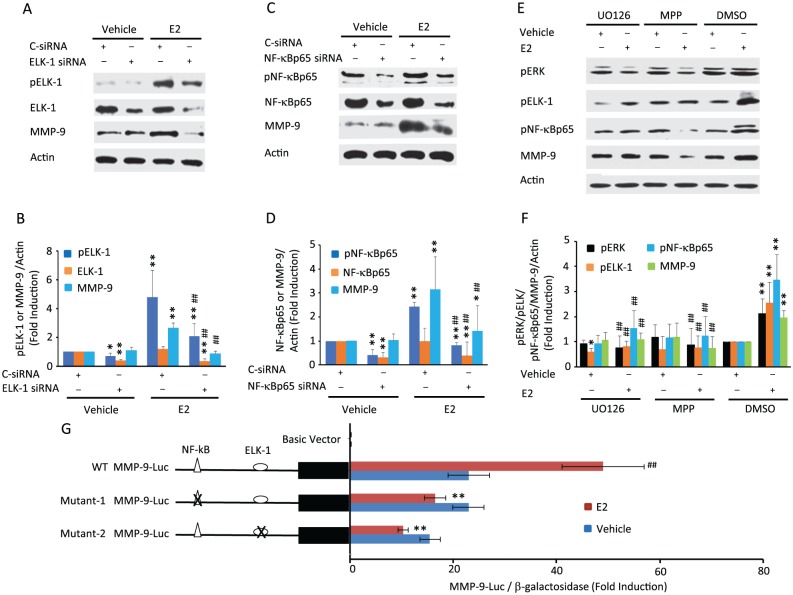Figure 4.
Inhibition of ELK-1 and NF-κB by their siRNAs or ERK and estrogen receptor α (ERα) with their respective inhibitors diminishes the 17β-estradiol (E2)–modulated phosphorylation of ELK-1 and/or NF-κBp65 with a corresponding decrease in matrix metalloproteinase 9 (MMP-9) induction. Additionally, mutagenesis of NF-κB or ELK-1 binding sites leads to a loss of E2-induced MMP-9 promoter activity. Western blots with quantified analysis show that (A, B) ELK-1 siRNA suppresses basal and E2-stimulated ELK-1 expression and phosphorylation and (C, D) NF-κB siRNA decreases basal and E2-stimulated expression and phosphorylation of NF-κBp65, with both resulting in the inhibition of E2’s induction of MMP-9. *P < 0.05 and **P < 0.01 vs. corresponding vehicle-treated controls. ##P < 0.01 vs. C-siRNA within E2 treatment groups. (E, F) ERK inhibitor, U0126, and ERα inhibitor MPP block E2-induced phosphorylation of ELK-1 and pNF-κBp65 and induction of MMP-9. Actin was used as an internal control. *P < 0.05 and **P < 0.01 vs. corresponding vehicle-treated DMSO controls. ##P < 0.01 vs. corresponding E2 treatment DMSO controls. (G) Studies with MMP-9 promoter-luciferase (MMP-9-Luc) constructs shows E2’s induction of wild-type (WT) MMP-9 promoter activity in fibrochondrocytes, which was abrogated when promoters were used with mutated NF-κB or ELK-1 binding sites in the promoter. **P < 0.01 vs. corresponding E2-treated WT MMP-9 promoter-luciferase construct. ##P < 0.01 vs. vehicle-treated wild-type MMP-9 promoter-luciferase construct. Values are presented as mean ± SD fold change.

